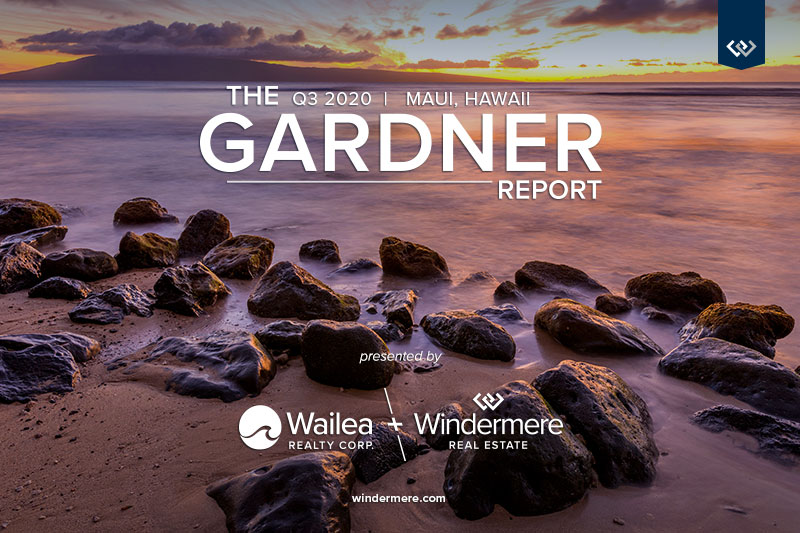The following analysis of select Maui real estate markets is provided by Windermere Real Estate Chief Economist Matthew Gardner. We hope that this information may assist you with making better-informed real estate decisions. For further information about the housing market in your area, please don’t hesitate to contact your Windermere agent.
ECONOMIC OVERVIEW
COVID-19 continues to significantly impact employment on Maui, causing the loss of 23,000 jobs between February and September. That said, although it really is no consolation, employment has risen by 900 jobs from the low in May. The mandatory 14-day self-quarantine proclamation introduced by Governor Inge has been replaced with a pre-travel testing option. Hopefully this will lead to increased tourism, which is the backbone of Maui’s economy. The unemployment rate on the island hit a very high 35.8% in April. This has dropped to the current rate of 24%, which is still high. I will temper enthusiasm about this improvement by saying that much of the decline was due to a significant reduction in the labor force. All of the Hawaiian Islands are suffering, but a bottom in employment has been reached. That said, I am not holding out any hope of significant job recovery until next year when a vaccine is freely available—and being used.
HOME SALES
❱ In the third quarter of 2020, 487 homes sold, a drop of 19.8% compared to the same period a year ago, but 36.8% higher than in the second quarter of this year.
❱ Sales did rise in the Central area, but the increase only amounted to one additional sale. The largest drop in sales was again in South Maui, where 98 fewer transactions closed compared to a year ago.
❱ Listing activity rose 14.7% compared to the same quarter in 2019 and was 10% higher than in the second quarter. This increase in the choice of homes for sale appears to have helped increase sales from the second quarter.
❱ Pending home sales were 2.2% lower than a year ago but they were a significant 49.3% higher than in the second quarter of this year. This means closings in the final quarter will likely be positive.
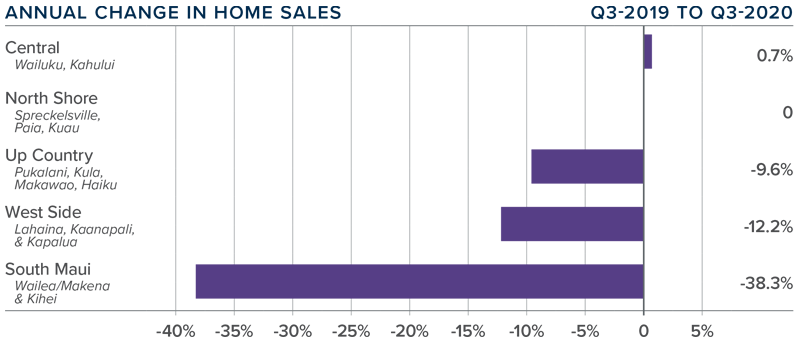
HOME PRICES
❱ As we saw in the second quarter, the average home price on the island rose 14.7% from last year to $1,030,000 and was 5.7% higher than in the second quarter of this year.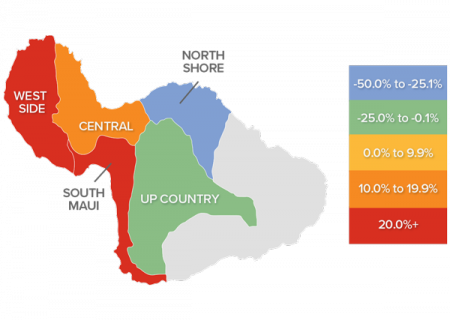
❱ Affordability is still a significant issue, but prices continue to appreciate. It is possible that buyers from the mainland are seeking out alternatives to traditional hotel or rental home vacations and are choosing to buy instead.
❱ Price growth was a mixed bag, with prices rising in three areas and dropping in two. The Westside and South Maui saw significant price growth, but the North Shore market experienced a major price drop. I am not particularly concerned about this as it is a very small area.
❱ The takeaway here is that price growth was very positive regardless of the economic issues that persist.
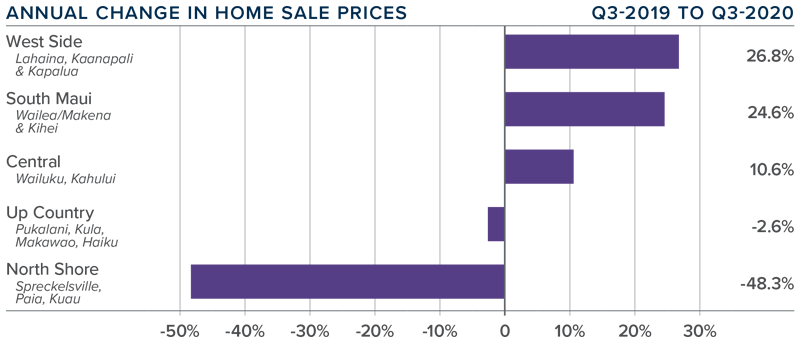
DAYS ON MARKET
❱ The average number of days it took to sell a home on Maui dropped 18 days compared to the third quarter of 2019.
❱ The amount of time it took to sell a home dropped in the Westside, North Shore, and Up Country but rose in all other areas.
❱ In the third quarter, it took an average of 54 days to sell a home, with North Shore homes selling at the fastest pace. It is taking the longest time to sell in South Maui.
❱ Market time not only dropped relative to a year ago, it also took 16 fewer days than in the second quarter. This is positive and shows there is demand from buyers.
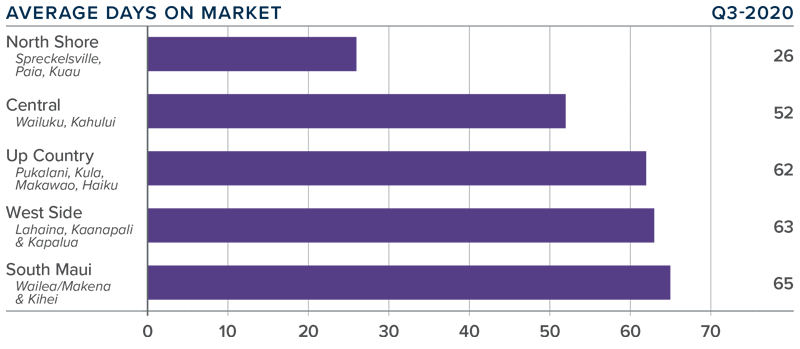
CONCLUSIONS
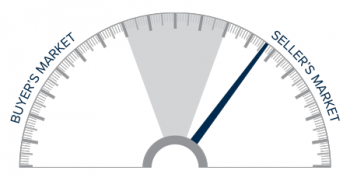 This speedometer reflects the state of the region’s real estate market using housing inventory, price gains, home sales, interest rates, and larger economic factors.
This speedometer reflects the state of the region’s real estate market using housing inventory, price gains, home sales, interest rates, and larger economic factors.
Unsurprisingly, the island is still reacting to the influences of COVID-19. Demand, although down from a year ago, was up relative to the second quarter, which is good. The pandemic will continue to influence the direction of the housing market and, as I suggested would be the case in the second quarter Gardner Report, there does appear to be some sort of return to a more normal market.
Price growth was significant, and sales rose in the quarter. As such, I am moving the needle back a little more in favor of sellers.
ABOUT MATTHEW GARDNER
 As Chief Economist for Windermere Real Estate, Matthew Gardner is responsible for analyzing and interpreting economic data and its impact on the real estate market on both a local and national level. Matthew has over 30 years of professional experience both in the U.S. and U.K.
As Chief Economist for Windermere Real Estate, Matthew Gardner is responsible for analyzing and interpreting economic data and its impact on the real estate market on both a local and national level. Matthew has over 30 years of professional experience both in the U.S. and U.K.
In addition to his day-to-day responsibilities, Matthew sits on the Washington State Governors Council of Economic Advisors; chairs the Board of Trustees at the Washington Center for Real Estate Research at the University of Washington; and is an Advisory Board Member at the Runstad Center for Real Estate Studies at the University of Washington where he also lectures in real estate economics.
 Facebook
Facebook
 X
X
 Pinterest
Pinterest
 Copy Link
Copy Link
